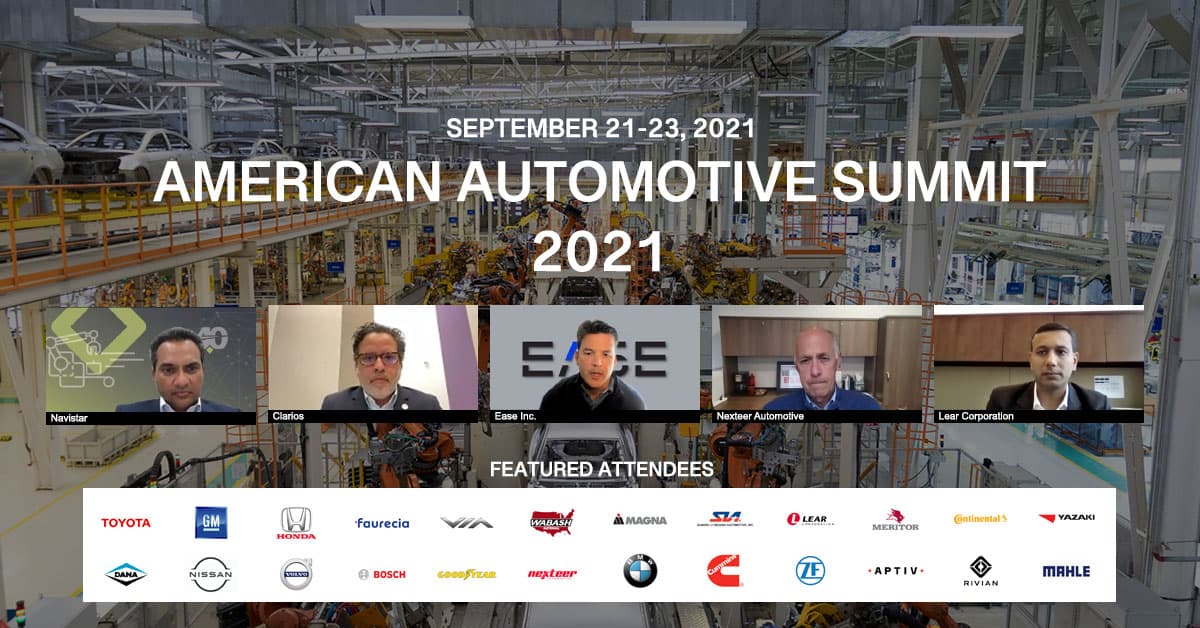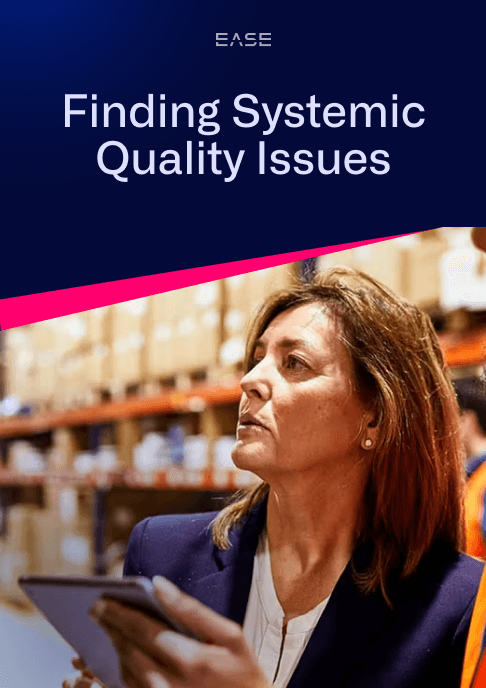Top 3 Takeaways from American Automotive Summit


Each year, delegates from automotive original equipment manufacturers (OEMs), their suppliers, and manufacturing technology providers convene at the American Automotive Summit to discuss the trends impacting the automotive supply chain and leading-edge strategies to drive the automotive industry forward.
Held virtually for the second year in a row, attendees had no less than 30 sessions to choose from over the three-day virtual conference. This being my first American Automotive Summit since joining EASE in March 2021, I was looking forward to hearing what the thought leaders in our industry, including Volkswagen, Toyota and Magna, had to say about how they’re addressing an increasingly challenging and competitive space. I was also excited to connect with a few of our customers and give a presentation of my own.
Now that the summit has wrapped up, here are the three key lessons I learned.
Download our free Ultimate Guide to Layered Process Audits for best practices and tips to improve quality with layered process audits
1. Tech, Data in Focus at American Automotive Summit
The first thing that struck me as I planned out the sessions I wanted to attend at American Automotive Summit was that for OEMs, automotive suppliers, and the companies like us that help support them, using data and technology more effectively was a clear priority. Of the four keynotes on the agenda, as an example, two focused on creating an industrial cloud of interconnected factories and upskilling the workforce to enable teams to embrace data and new digital technologies. All told, there were more than 25 sessions dedicated to tech topics on this year’s agenda, with themes including digital transformation (more on this below), predictive maintenance, automation, AI, machine learning, and collaboration in an increasingly virtual workplace. Clearly, the automotive industry recognizes the role of better data and technology in improving operations, and event attendees were treated to a variety of perspectives on where, when, and how to innovate.
2. Digital Transformation Transforms Layered Process Audits
At mid-day on day one, I had the pleasure of hosting a lunch and learn titled Digital Transformation: Why Mobile Auditing is the First Step and How to Get Started. This virtual breakout session covered the state of digital transformation in manufacturing, spotlighting important research from Deloitte, McKinsey and SMB Group on the effects of the ongoing COVID-19 pandemic on the priority of digitizing traditionally manual processes. The presentation also covered the keys to getting started with a successful digital transformation initiative (hint: start small!) and how to identify the right first project to produce meaningful results.
For many automotive manufacturers, starting down the road to digital transformation by replacing pen-and-paper plant floor audit programs with EASE is the perfect way to make quick, measurable improvements to their quality management systems that then build momentum for larger initiatives. For the second half of this 45-minute session, attendees and I were able to have an open conversation about how EASE helps companies implement digital layered process audit programs that:
- Reduce time spent on audit administration, management and reporting
- Reduce time spent conducting audits
- Improve audit accuracy
- Help reduce scrap, rework and quality escapes
- Reduce time spent preparing for external audits
- Improve customer satisfaction and retention
The key takeaway was that while there is no magic bullet that digitally revolutionizes a plant overnight, there are quick wins out there that can be used as building blocks towards larger initiatives if manufacturers can recognize the plant floor processes that are holding them back.
3. OEM-Supplier Relationships More Important Than Ever
To close out American Automotive Summit, Ease CEO Eric Stoop moderated a panel presentation titled How OEMs and Suppliers Continue to Collaborate Through Globalization and Increased Speed-to-Market Pressures. He was joined by experts from across the automotive space, including:
- Luis Cantu Peña, Director, Quality OE US/CAN at Clarios
- Dennis Hoeg, VP, Global Manufacturing Operations with Nexteer Automotive
- Sajid Kunnummal, VP & Chief Procurement Officer at Navistar
- Aditya Oberoi, VP, Corporate Strategy, Lear Corporation
Leading off with a discussion of change management, the panel was unanimous on its increased importance in the wake of the COVID-19 pandemic and ongoing supply chain pressures. “The only way to survive is to invite change at an astronomical pace,” said Mr. Oberoi. COVID has opened the industry’s eyes to the need for an agile supply chain, new startups are entering the space that have embraced new technologies, and established manufacturers can’t be constrained by legacy practices that hinder their ability to respond to disruptions.
On the topic of digital transformation, the consensus was that the pandemic only highlighted the industry’s need to invest in technology. Every panelist cited investments their company had made in supply chain analytics and getting further ahead of potential disruptions. Mr. Cantu Peña shared that for Clarios, it’s important to configure themselves as a company to be able to benefit from technology rather than investing across the board and attempting to shoehorn new technologies into multiple processes simultaneously. It’s also of paramount importance to focus on quality. “Everyone is quality, and data is important,” he said.
When the conversation shifted to events like the Suez Canal fiasco and the ongoing semiconductor shortage, Mr. Kunnummal stressed the importance of communication throughout the supply chain in overcoming the unexpected. He cited examples of OEMs, Tier 1 suppliers and beyond coming together in ways they wouldn’t have done before to address challenges as a group rather than as separate companies. Mr. Hoeg agreed, noting that because the most important thing is that a customer’s production does not get interrupted due to a shortage, he’s seen manufacturers ship precious semiconductor chips from plant to plant in order to keep customers’ assembly lines running.
Though the conversation could have continued for much longer and continued to expand on the relationship between OEMs and suppliers, the panel concluded with a quick discussion on the future of electric vehicle manufacturing and any changes that may come to the supply chain. Mr. Hoeg and Mr. Cantu Peña, whose companies manufacture driveline and batteries, felt that things would be largely business as usual for them moving forward. Meanwhile, Mr. Kunnummal highlighted that with regulatory pushes toward reducing emissions, the industry has little choice but to embrace the evolution, but that decisions still need to make business sense. “We need to keep up with the pace of technology and we’re all learning as we go,” he said. In closing, Mr. Oberoi speculated that in the near future, the relationship between OEMs and tier 1 suppliers might evolve into more of a partnership than a traditional customer relationship, enabling shared learnings and rapid innovation.
All in all, the 2021 American Automotive Summit was an incredible event for anyone looking for a deeper understanding of how to successfully move forward in a rapidly evolving industry. Armed with lessons learned from three jam-packed days of panels, presentations, and breakouts, attendees should have the information they need to drive meaningful change at their companies in the coming months and years.
